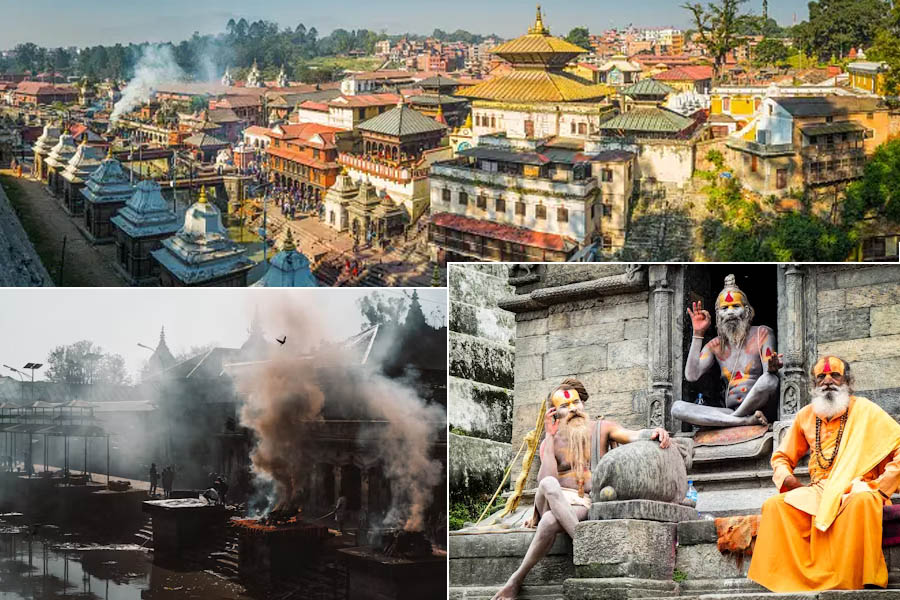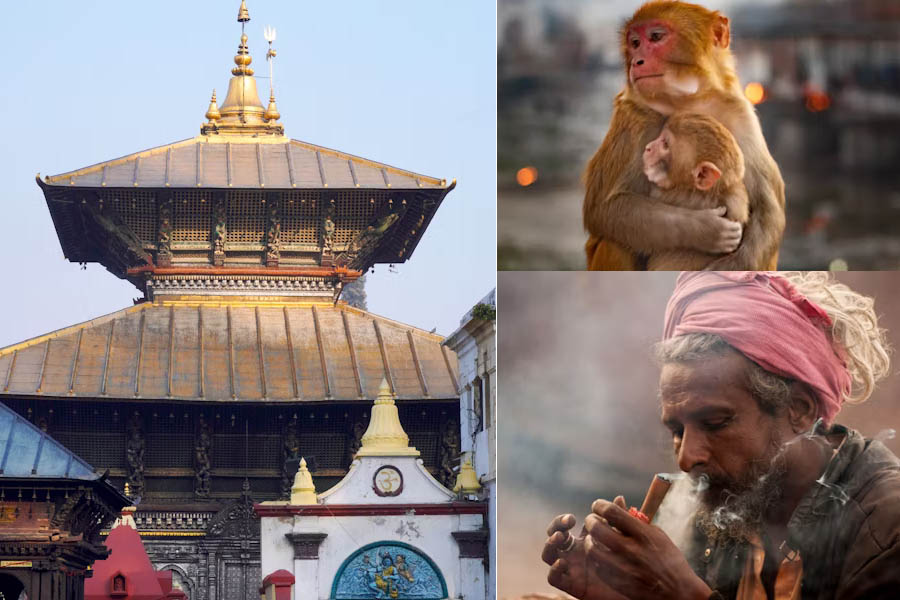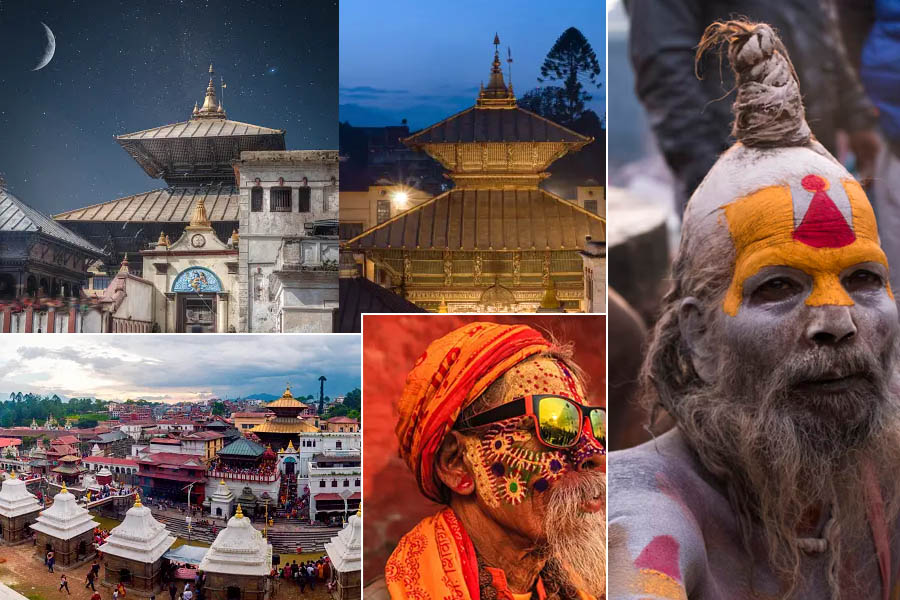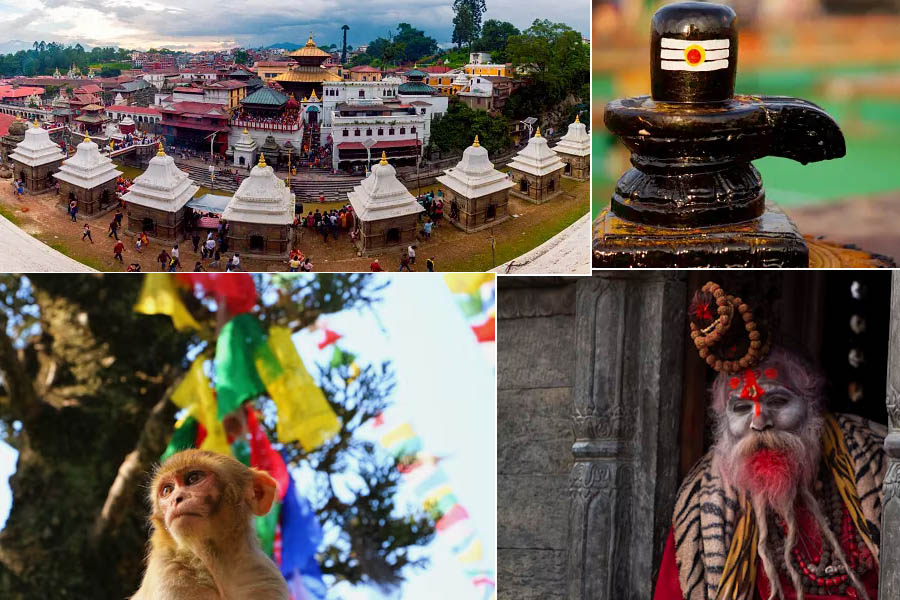The ethereal aura of Maha Shivaratri, a festival that holds profound significance in the Shaivism tradition of Hinduism
7-March-2024
The profound customs and rituals of Maha Shivaratri, a revered festival deeply rooted in the Shaivism tradition of Hinduism. Distinguished by its nocturnal observance, Maha Shivaratri stands apart from other Hindu festivals, emphasizing introspection, fasting, and meditation on Lord Shiva. The observance entails an all-night vigil, prayers, and offerings at Shiva temples, symbolizing the triumph over darkness and ignorance. Devotees engage in rituals such as maintaining jagarans and chanting the sacred Panchakshari mantra, "Om Namah Shivaya," fostering spiritual communion. In Nepal, Maha Shivaratri is a national holiday celebrated with fervor across the country, particularly at the iconic Pashupatinath temple. The festival assumes multifaceted dimensions, intertwining religious observances with cultural traditions.
Shiva Philosophy and Shivaratri: Essence of a Festival Rooted in Shaivism Tradition of Hinduism
In the universe, there are five main elements: creation, sustenance, destruction, concealment, and grace! These five elements are cosmic functions. We call the creation of creation, the beginning, or creation. Sustenance is the preservation of creation, the act of preservation is the worship of Shiva. After creation, there is destruction called destruction. The concealment of life is the concealment of the living spirit, liberation is the grace of all these, it is called liberation, some call it the five great elements. Creation is in the earth, sustenance is in water, destruction is in fire, concealment is in air, and grace is in the sky. The earth is made up of elements, sustenance or life is sustained by water, fire destroys everything, air governs life. These four elements are manifested in the form of the Word-Brahman in the sky. To accomplish these five main tasks, Shiva has five faces. There are four faces in all four directions, the fifth face is in the middle of all these. Brahma and Vishnu took charge of creation and sustenance by praying to the five-faced Shiva. Rudra and Maheshwar are two forms of Shiva's manifestation.
The source of these five actions is the 'Om' mantra. Omkar first emanated from Lord Shiva's mouth. Omkar is the speaker, Shiva is the speech, Omkar is the form of Shiva. By always remembering Omkar, people not only become filled with Shiva but also become auspicious. The meaning of Shiva is welfare, universal welfare. It is necessary to be connected in service with generosity to receive Shiva's grace. Through his grace, anger, wrath, and malice are automatically eradicated. The eastern face of Shiva represents 'ka', the western face represents 'u', the southern face represents 'ma', the northern face represents the dot of 'Om', and the central face represents the sound, called 'swara'. Shiva's form is Omkar, 'a', 'u', 'ma', and the dot and sound together constitute this universe. Om is called the monosyllabic Pranava mantra. This is the source of all! From the Vedas to the entire universe and all its heavens and earth within, everything is included. Human form, female, and male, all have arisen from this. This mantra is a symbol of both Shiva and Shakti.

Both life and the universe, the divine and the perishable, are all contained within it. This Panchakshari mantra is the beginning. From the Panchakshari, five basic sounds and the five basic consonants have been created. 'A', 'i', 'u', 'ri', 'lri' are the five basic sounds, and 'ch', 'chh', 'j', 'j', 'n' etc. are made from them. The construction of the Panchakshari (Five Word) mantra has occurred from Omkar to 'ma' without 'Om Namah' in order. It is from here that the Gayatri mantra originated. From the Gayatri mantra, all the Vedas manifested, and millions of mantras emerged from those Vedas. Different mantras inspired different tasks. Mantras are used for demonstration. Desires of the mind are fulfilled through mantras. There are two types of it, enjoyment and liberation! Worldly pleasure is enjoyment, the act of liberation from the cycle of life and death after death is liberation, which is called liberation, the destruction of attachment is liberation.
After the cessation of desire, the bondage of worldly existence is released, until there is not even a trace of attachment and desire, liberation is not attained. The Pranava mantra provides both contentment and liberation. The desire-driven attitude achieves the first objective, and the selfless attitude achieves the second objective. Shiva is the soul of all. Shiva is Brahma, whose power is infinite. Shiva is the true guru, he is called Shambhu, Shambhu is self-manifested. Salutations to the formless, salutations to the formless brilliance. Salutations to the lord of all beings, salutations to the soul of all. Salutations to the utterance of 'Om', salutations to the lingam of 'Om'. Salutations to the creator of creation and others, salutations to your five faces. Salutations to the form of the five elements, salutations to your five deeds. Salutations to the infinite virtues and powers, salutations to the eternal form, salutations to the guru, Shambhav. This is how the prayer is offered.
Mysteries of the Human Birth Chart through Shiva Philosophy
In the beginning of creation, the omniscient, all-compassionate Shiva envisioned various avenues for the benefit of all. Shiva is a healer. The founder of medicine, Shiva provides health to all. From the perspective of providing health, he created various paths of Maya Shakti. Particularly, worshiping the divine brings about the acquisition of wealth.
The conception of Kumar's bar was primarily made to protect the condition of the child at birth. Then, to dispel the laziness and sins of people and to show mercy to all, the divine protector Vishnu's bar was created for everyone. After that, Lord Shiva created Brahma's bar, which gives life for the creation and protection of people. The purpose of creating these bars in this way was to achieve longevity and success for everyone. Then, for the creation of the world, Shiva conceived the staff of Indra and Yama to give both auspicious and inauspicious results along with sin and virtue.
These avenues were designed to provide experience to the world and to dispel the fear of death from all living beings. Seven rods have been designated to indicate the attainment of virtue from pleasure, pain, and sin. Their names are different, and their masters are also different. The master of these imagined pathways by Shiva is the Sun for the day. The ruler of the Moon's power is the Moon. The master of Kumar's staff is Mars. The master of Vishnu's bar is Mercury. The master of Brahma's staff is Jupiter. The ruler of Indra's bar is Venus, and the ruler of Yama's bar is Saturn. Based on the worship of your bar, the results may vary.
Unlocking Everyday Blessings: The Benefits of Regular Worship in Shiva Philosophy
Worshiping the Sun bar keeps the body healthy. Worshiping the Moon on Monday brings about the acquisition of enjoyment and wealth. To get rid of illness, one should worship on Tuesday. Those who desire physical strength should worship on Wednesday, those who want to increase their lifespan should worship on Thursday, those who desire enjoyment, wealth, and entertainment should worship on Friday, and those who want to correct death should worship on Saturday.

Lord Shiva always bestows the fruits of all prayers. Worshiping the Sun on Sunday pacifies sins, worshiping the Moon on Monday brings the acquisition of wealth, worshiping on Tuesday keeps the body healthy, worshiping Vishnu on Wednesday brings growth in children, family, and friends, worshiping Jupiter brings longevity, worshiping on Friday brings the acquisition of enjoyment. Worshiping Sukh on Saturday will prevent accidents, there will be fewer minor deaths, and good health will be obtained. In every auspicious work, worship of the Sun and other planets is necessary.
Worship of the nine planets is also necessary behind inauspicious deeds. Planetary worship is necessary for householders. There are many methods and procedures for worship and rituals. Poor people can worship through penance, fasting, etc., while rich people can practice religion by planting trees, building schools, canals, drains, temples, toilets, roads, etc., through public works. By praying to God every day, by performing rituals, the heart becomes pure. Body, wealth, and mind become pure. Special days, festivals like Shivaratri or other festivals yield more results for religious acts performed.
Auspicious: Experience the Divine Bliss of Maha Shivaratri Festival in Nepal Every Year
Maha Shivaratri holds profound significance in the Shaivism tradition of Hinduism. Unlike typical Hindu festivals celebrated during the day, Maha Shivaratri is revered through night-long observance. It stands out amidst the cultural revelry of other Hindu festivals, characterized by its solemnity, introspection, fasting, meditation on Shiva, self-reflection, and social harmony, culminating in an all-night vigil at Shiva temples.
The festivities entail maintaining a jagaran, an all-night vigil and prayers, symbolizing the triumph over darkness and ignorance in one's life and the world through devotion to Shiva. Devotees offer fruits, leaves, sweets, and milk to Lord Shiva, while some observe all-day fasting accompanied by Vedic or tantric worship, and others engage in meditative yoga. Throughout the day, the sacred Panchakshari mantra of Shiva, "Om Namah Shivaya," resonates in Shiva temples, reverberating the divine essence.
Maha Shivaratri is observed as a national holiday in Nepal, with celebrations reverberating in temples across the nation, notably at the revered Pashupatinath temple. Thousands of devotees flock to the famous Shiva Shakti Peetham nearby. Across the country, sacred rituals are performed in reverence to Lord Shiva. Additionally, Maha Shivaratri is commemorated as Nepali Army Day, marked by a grand ceremony at the Army Pavilion, Tundikhel.
In the capital city of Kathmandu, a unique tradition unfolds, as children temporarily block roads using ropes and strings, requesting donations in exchange for passage. Devotees of Shiva engage in nocturnal worship, partaking in marijuana, believed to be a favored offering of Shiva. This act is referred to as receiving ‘Shivako Prasad’ or ‘Shiva Buti,’ symbolizing the "Blessing of Shiva."
Throughout Nepal and neighboring India, crowds of sadhus and saints converge upon the sacred Pashupatinath Temple in Kathmandu, participating in puja ceremonies and joyously celebrating the auspicious occasion of Maha Shivaratri.
Thank you for reading:
globalpostheadline.com | If you want to advertise your Company, Events, Movies, Products, Hotels, Travel Packages Let us know



